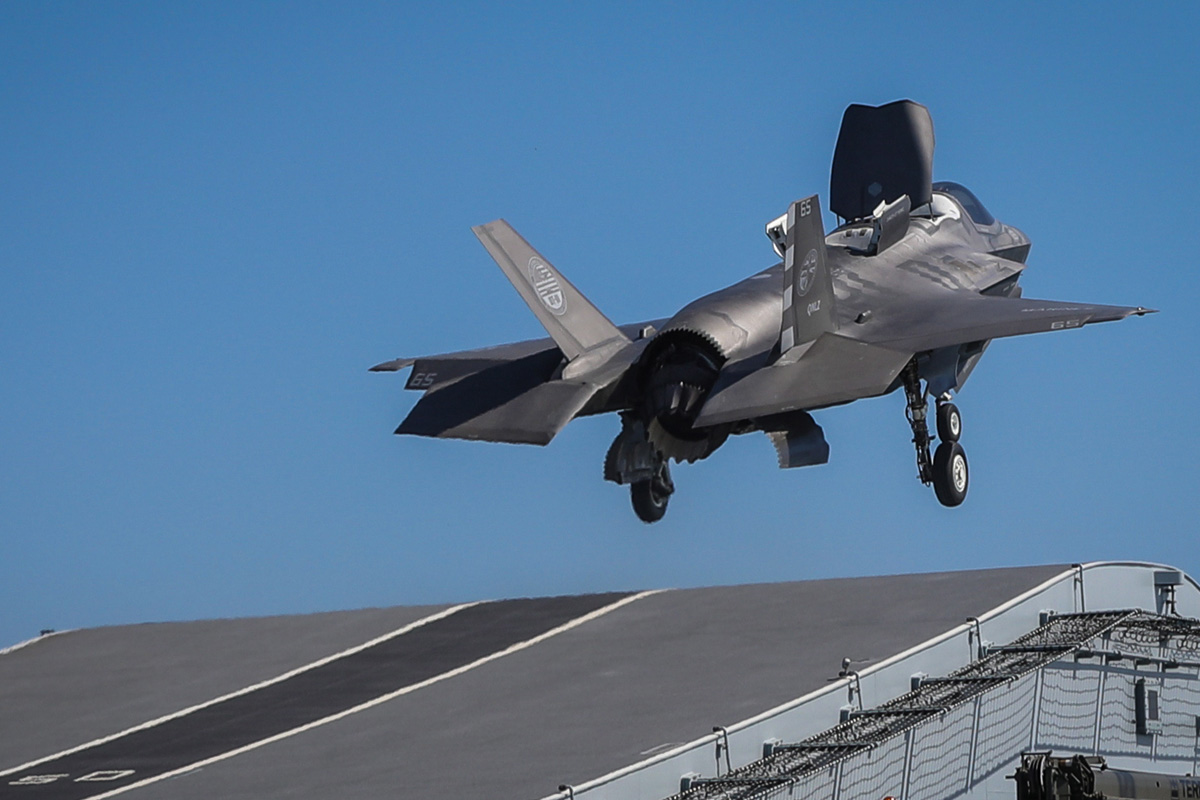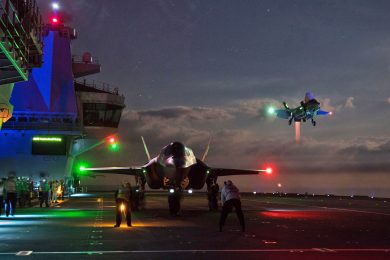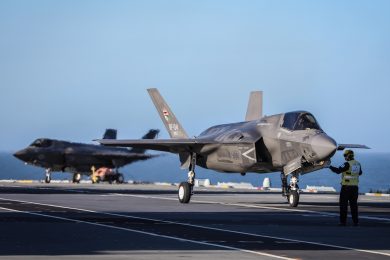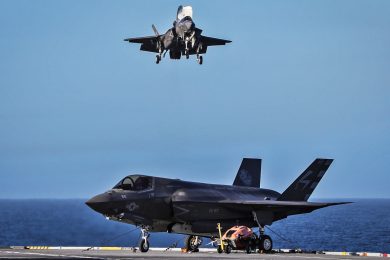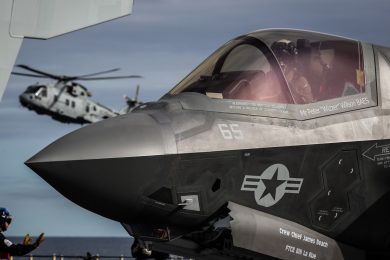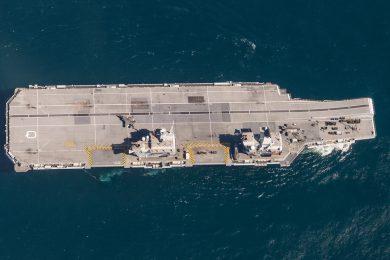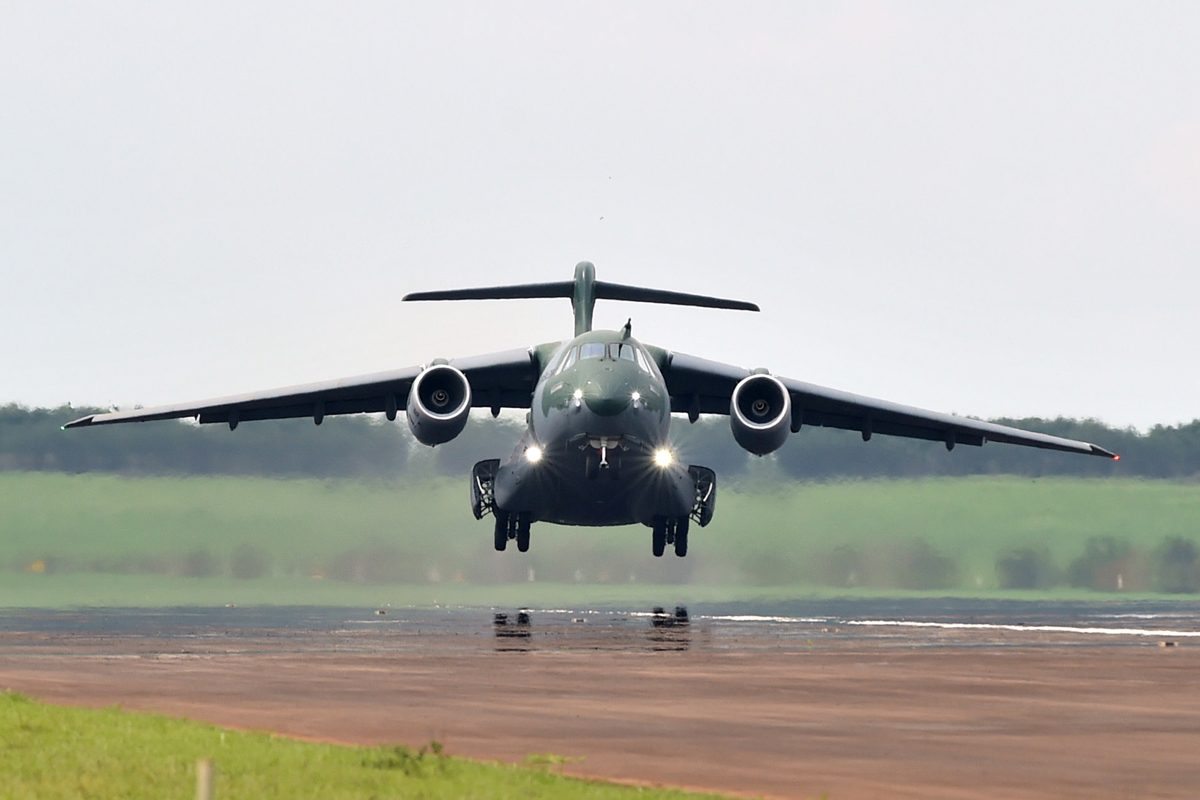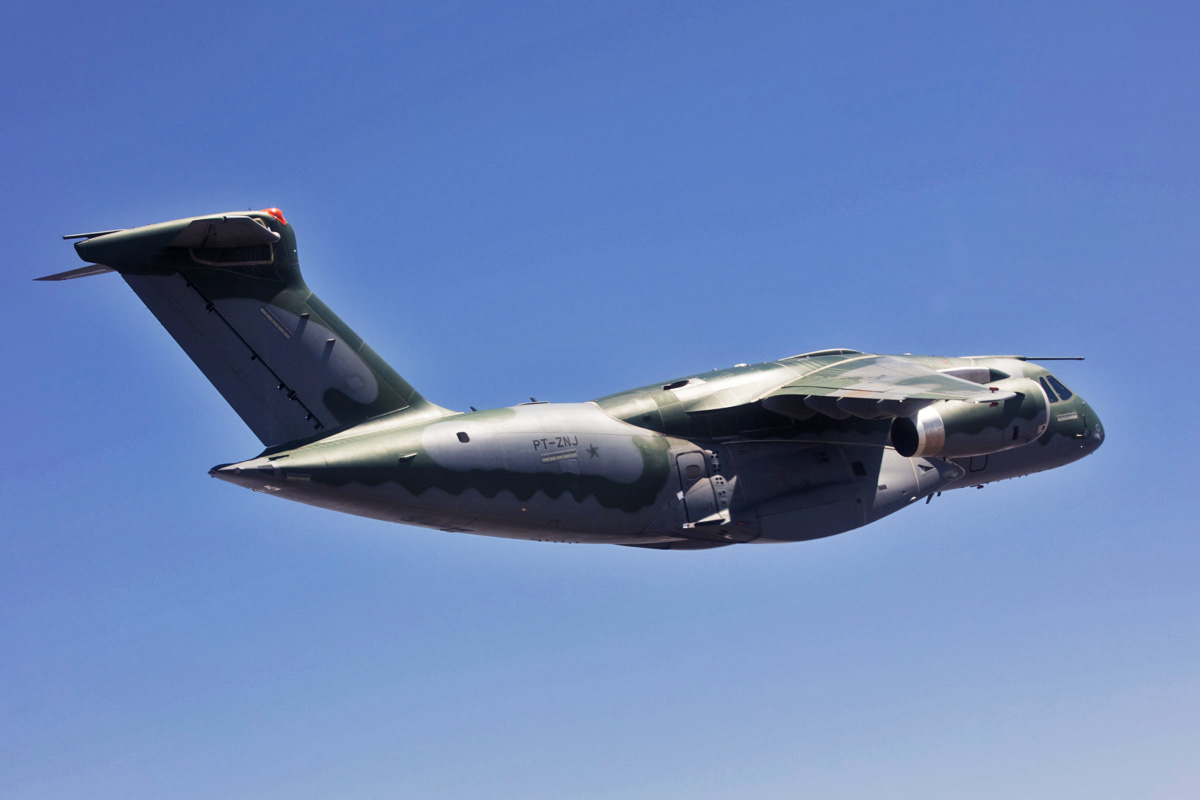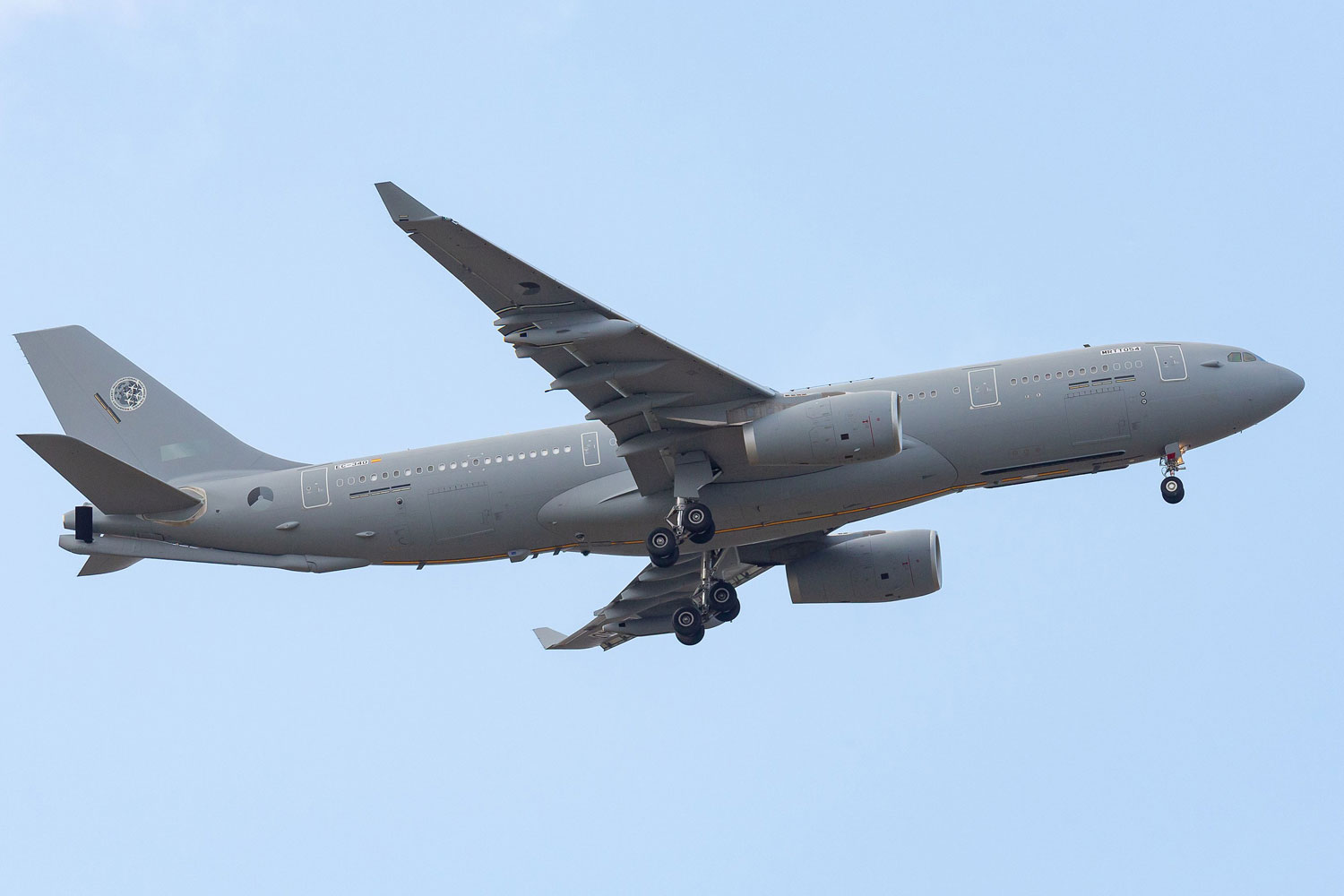Eight years after the retirement of the Harrier GR9, the Royal Navy has returned to operations with fixed-wing aircraft aboard an aircraft carrier. Tests with two Lockheed Martin F-35Bs are being carried out on the new aircraft carrier, HMS Queen Elizabeth since the end of September.
The UK has acquired the most complex F-35, the “B” version, which has vertical or short landing and take-off (VSTOL) capability. The system adopted by Lockheed Martin, however, is different from that used by the veteran Harrier who had thrust vectorable in four lateral nozzles. In the F-35B is a mechanism developed by the same Rolls-Royce (and creator of the Harrier engine) consisting of counter-rotating fans installed behind the pilot in an upright position that use part of the pressure generated by the main engine to generate thrust in the front.
The main engine, provided by Pratt & Whitney, has a rotating nozzle that directs the flow up to 90 degrees, as well as two outlets on the wings that provide maneuverability.
The advantage of this complex system is to allow the F-35B to be able to fly at supersonic speed, a capability that was not common in the take-off and vertical landing planes of the past.
“The largest warship in British history is joining forces with the most advanced fighter jets on the planet. This marks a rebirth of our power to strike decisively from the seas anywhere in the world,” said Gavin Williamson, British Secretary of Defense.
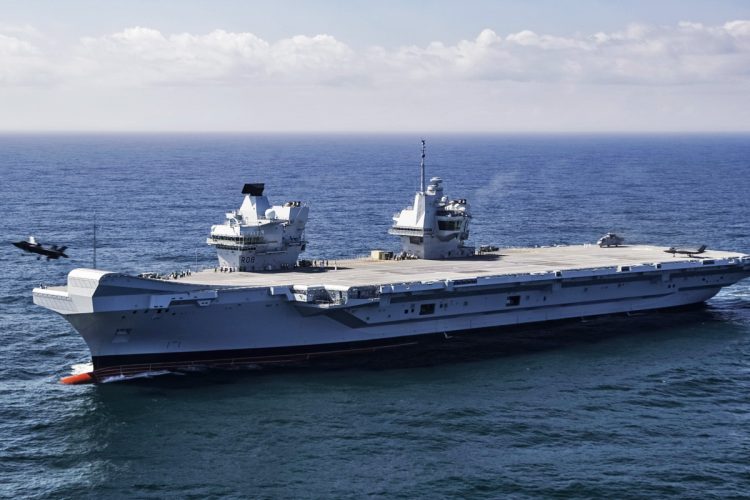
The two planes used by the British pilots, however, are provided by the manufacturer and the other by the US Marines. The first day they arrived on the ship, they ran off the ramp at the Queen Elizabeth. To date, the UK has received 16 of 138 aircraft ordered, nine of which are in operation by the RAF and the others on tests in the United States.
The Royal Navy must put the Queen Elizabeth into service in 2021 and with an F-35B squadron with 24 units plus Leonardo’s AW101 Merlin helicopters. A second ship, the HMS Prince of Wales, was launched at sea late last year and should be completed by 2023.
Tests with the F-35B should last 11 weeks with more than 500 landings and takeoffs to take place.

